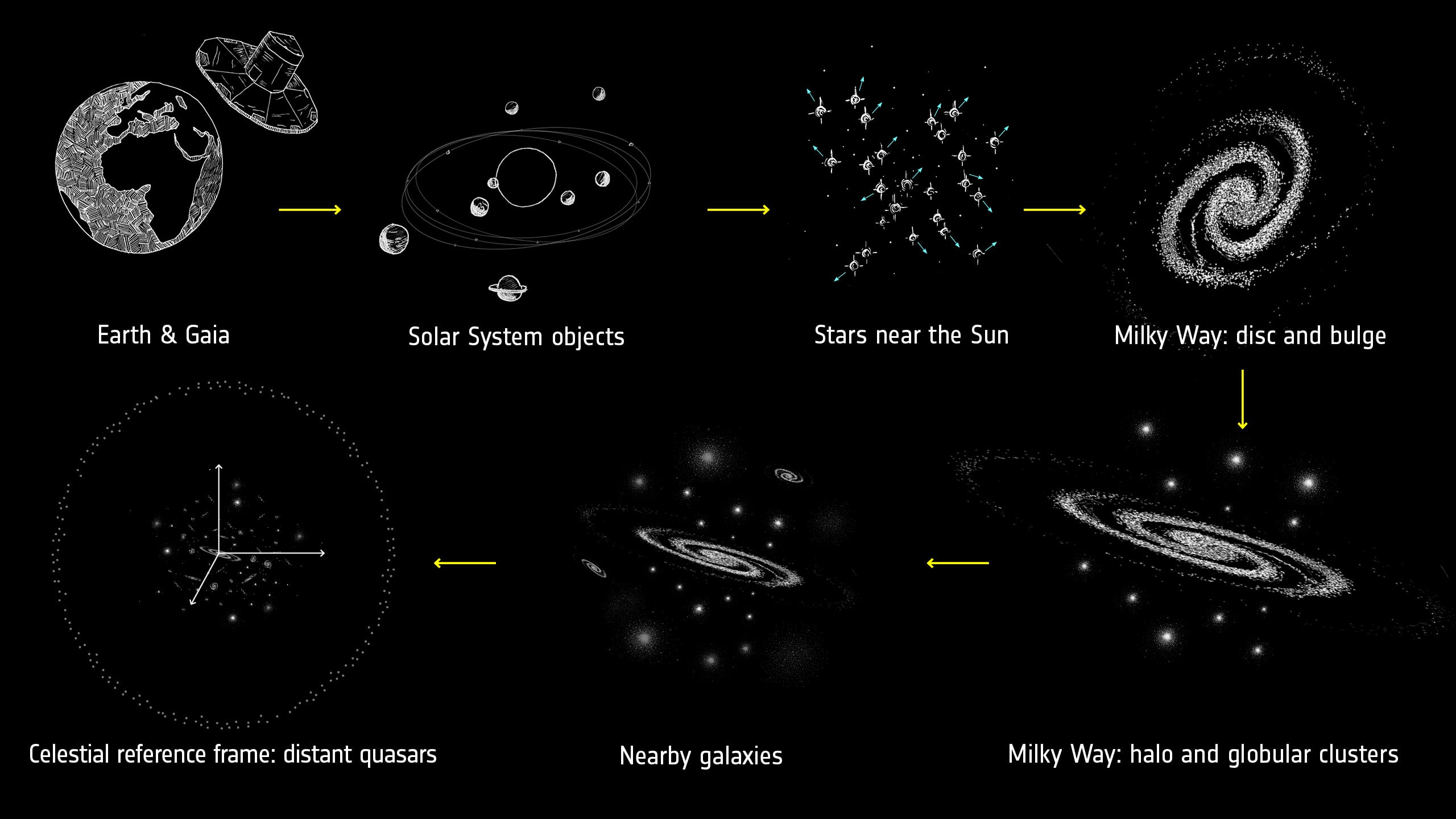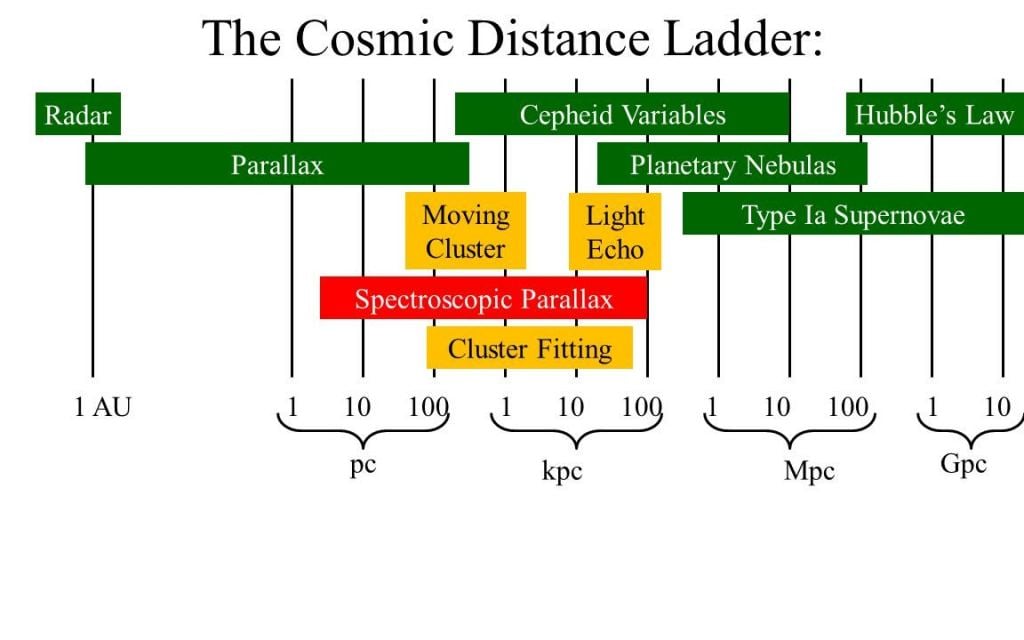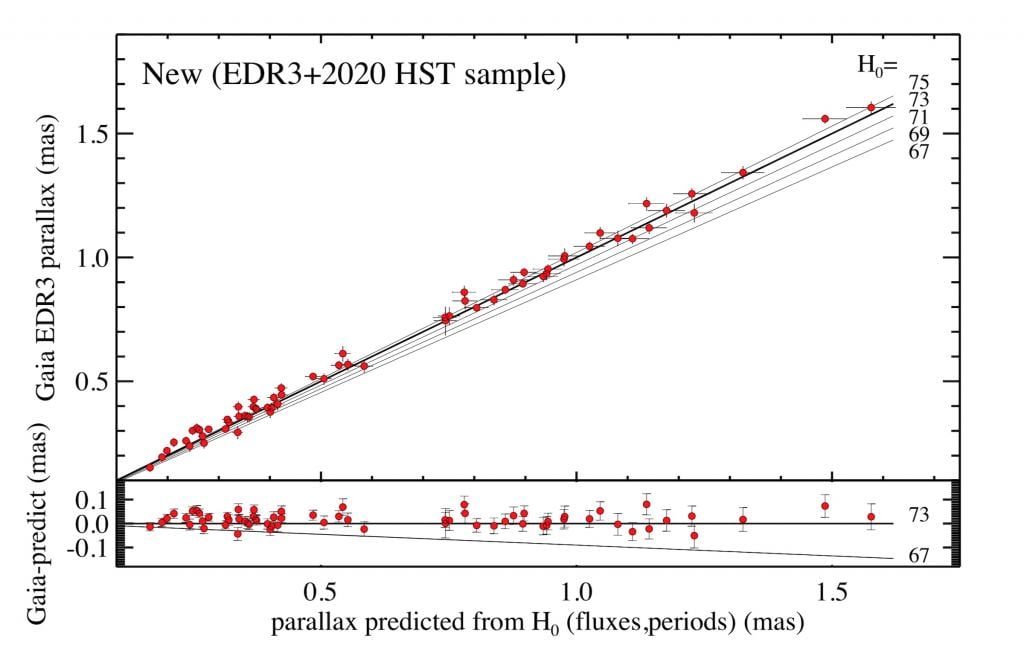Measuring the expansion of the universe is hard. For one thing, because the universe is expanding, the scale of your distance measurements affects the scale of the expansion. And since light from distant galaxies takes time to reach us, you can't measure what the universe is, but rather what it was. Then there is the challenge of the cosmic distance ladder.
The distance ladder stems from the fact that while we have lots of ways to measure cosmic distance, none of them work at all scales. For example, the greatest distances are determined by measuring the apparent brightness of supernovae in distant galaxies. That works great across billions of light-years, but there aren't enough supernovae in the Milky Way to nearby measure distances. Perhaps the most accurate distance measurement uses parallax, which measures the apparent shift in the position of a star as the Earth orbits the Sun. Parallax is a matter of simple geometry, but it's only accurate to a couple of thousand light-years.
Because of this, astronomers often measure scale by building one method upon the other. Use parallax for the closest stars, including a type of variable star known as Cepheid variables. Cepheids vary in brightness proportional to their average luminosity, so you can use them to measure distances up to 100 million light-years or so. Supernovae occur all the time within that range, so you can then use supernova measurements to determine distances over billions of light-years. These aren't the only methods used in the cosmic distance ladder, but each method has a limited range and a limited accuracy.
Since there is an uncertainty to any measurement you make, errors can build in the distance ladder. If your parallax measurements are a bit off, then your Cepheid measurements will be more off from the get-go, and your supernova measurements are even less accurate. Because of this, when we measure cosmic expansion using different methods we get results that disagree slightly. This is known as cosmic tension. In the past, this wasn't a huge problem. While different methods gave different results, the uncertainty of measurement was large enough that results overlapped. But as our measurements get more accurate, they aren't overlapping anymore. They downright disagree.
To resolve this problem, a team of astronomers recently focused on making the cosmic distance ladder more accurate. Their focus is on parallax measurements, which is the ground on which the distance ladder stands. In this case, they use data from the Gaia spacecraft. Gaia has measured the parallax and motion of more than a billion stars, including Cepheid variable stars. From this, the team reduced the uncertainty of the Cepheid distance method to just 1%. Using this new result in the cosmic distance ladder, they get a measurement for the Hubble constant (the rate of cosmic expansion) to be between 71.6 and 74.4 km/sec/Mpc. This is great, but it further conflicts with other methods, particularly data from the Planck satellite measurement of the cosmic microwave background, which gives a value of between 67.2 and 68.1 km/sec/Mpc.
It seems the more accurate our measurements, the worse the tension problem becomes. There's something about cosmic expansion we clearly don't understand, and we can only hope that more and better data will lead us to a solution.
Reference: Riess, Adam G., et al. " Cosmic Distances Calibrated to 1% Precision with Gaia EDR3 Parallaxes and Hubble Space Telescope Photometry of 75 Milky Way Cepheids Confirm Tension with LambdaCDM." *arXiv preprint* arXiv:2012.08534 (2020).
 Universe Today
Universe Today


